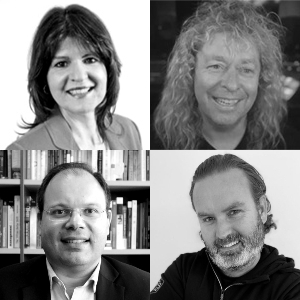Whether “intelligence” can be created within hardware is a fascinating question, and one that remains unanswered despite significant efforts. In contrast, biological intelligence from a neural source offers a “ground truth” of opportunity. As such, the question becomes not ‘if’ general intelligence can arise from something artificial, but ‘how’.
On Sunday, 23rd of August, the Possible Impossibles online forum was live-streamed by Parliament of Victoria, with ABC’s award-winning science journalist, Natasha Mitchell, hosting the event. She spoke with four scientific leaders in the fields of new technologies, medical science, environmental science and space exploration to discuss the role of science in shaping our lives in a post COVID-19 future. What follows is a summary of the key points made by each speaker, featuring: Professor Elizabeth Croft, Dean of Faculty of Engineering, Monash University; Dr Kudzai Kanhutu, Deputy Chief Medical Information Officer, Royal Melbourne Hospital and Infectious Diseases Physician; Associate Professor Julie Mondon, Director of Environmental Science, Deakin University, and; Dr Gail Iles, Senior Lecturer in Space Physics, RMIT University and Member of the Board of Directors, Space Industry Association of Australia.
With technology becoming more compact, smarter (with artificial intelligence) and having greater computing power, robots can now make decisions at fast speeds. The future of robotics is rapidly evolving. Elizabeth believes that robots are becoming more human-like and that we therefore need better, smoother human-robot interactions. Professor Elizabeth Croft wants to make sure that people are considered in the design of robots. In all of her designs, she starts by first observing people. “We need to think about how we’re going to get along with the robots,” she says, after all, they are already increasingly coming into our homes.
Everyone’s reality is slightly different. We all experience the world around us in different ways. Our world is sensed as numbers and electrical impulses that our brains then turn into something meaningful. At Extrasensory, everyone was challenged to make sense of the world of the senses and find the limits to their own. There were many incredible sights, tastes and sensations to behold while exploring the magnificent spaces of the Parliament of Victoria!
In the 1970s, while a student of psychology and physiology at Oxford University, Dr Susan Blackmore experienced a profound “out-of-body experience.” Afterwards, she sought a deeper understanding and completed a Doctor of Philosophy in parapsychology, analyzing reported incidents of clairvoyance, telepathy, astral travelling and so forth – all a part of what has become a lifelong engagement with the ‘mystery of consciousness.’ Through her studies, Blackmore formed a view that personal experiences of the paranormal were a byproduct of abnormal brain functioning. Freshly bestowed with a doctorate in ‘psychic powers,’ she was worried “there was no way [she] was going to get a normal job…or any job.” However, she broadened her research interests to take in evolutionary theory, mimetics, and studies in consciousness to become a freelance writer and lecturer, tackling subjects that would only become the focus of scientific enquiry in the late 1990s.









